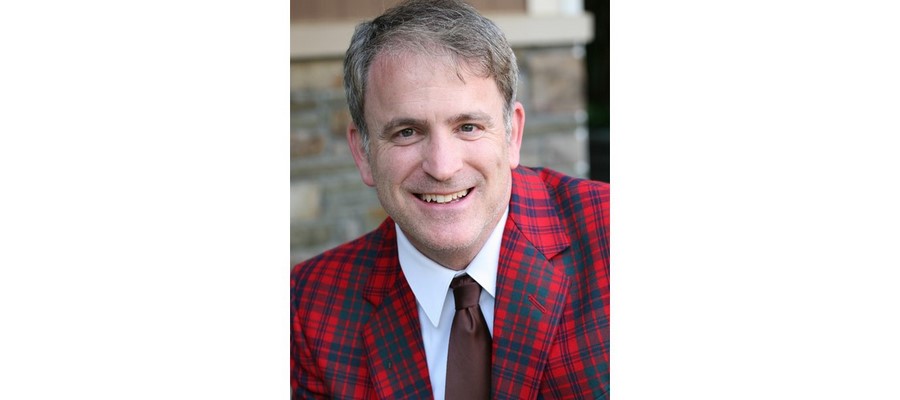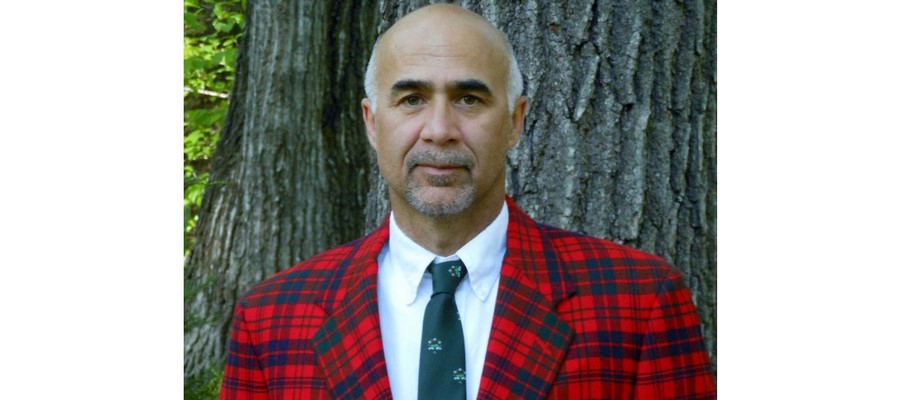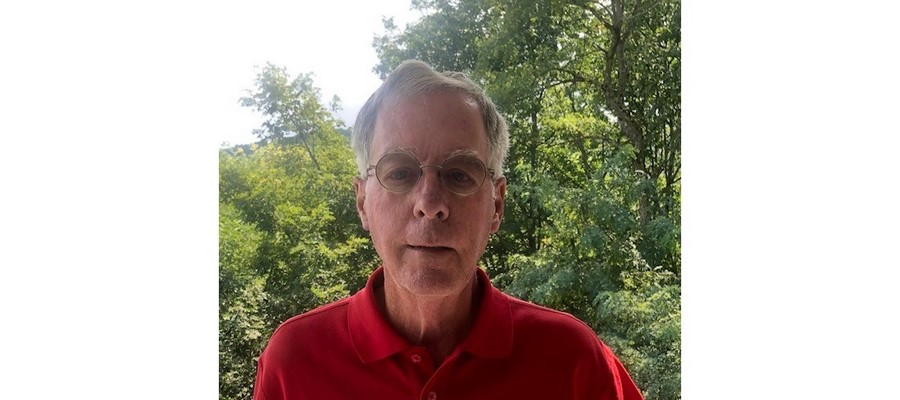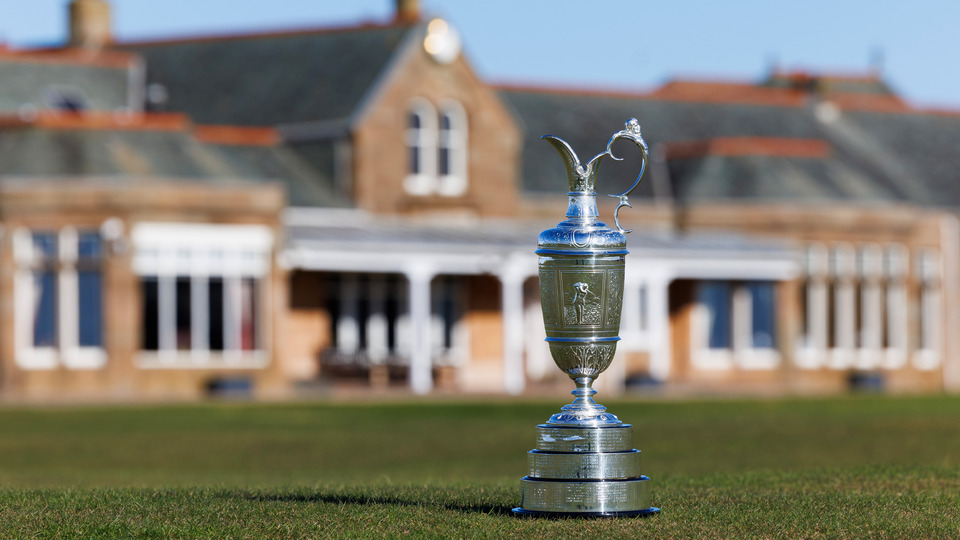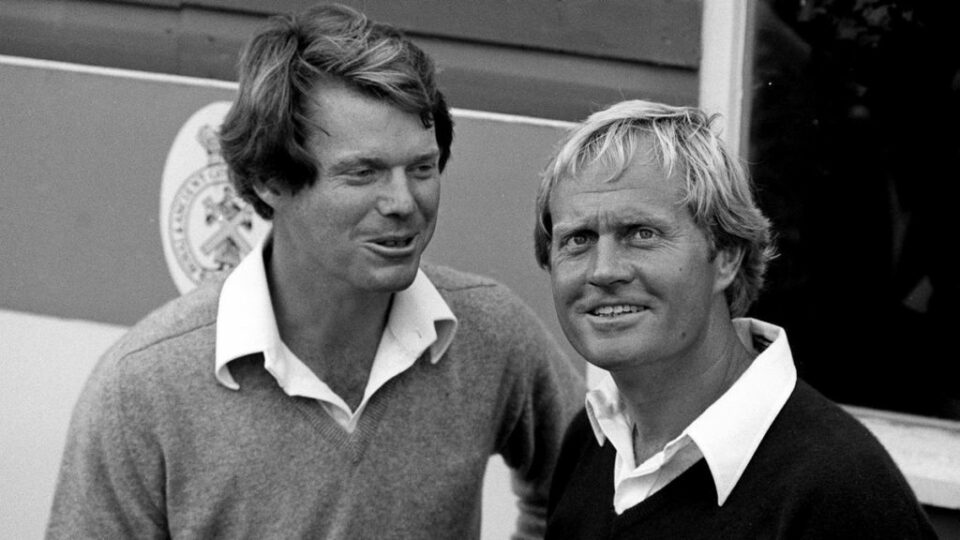Charlotte, North Carolina USA
September 20-25
Quail Hollow is no stranger to elite golf competition. Originally designed by George Cobb and opened in June, 1961 -- the course has been the site for numerous key golf events over the years.
Upgrades have been carried out over the years. Arnold Palmer's design company did several hole modifications in 1986 but major alterations were put into motion by Tom Fazio starting in 1997 and doing various improvements over various time intervals through the years -- including ones carried out just recently.
The 14th Presidents Cup this week marks the latest golf chapter for the Charlotte-based club. Originally the matches were scheduled to take place in 2021 but because of the global pandemic were postponed till the end of September in 2022.
One significant modification for the matches will be a re-routing of the course. The series of holes changes starting after the 8th hole. Players will then head to the 12th and continue thereafter.
After the 18th hole, players will play the 9th thru the 11th. The modification was carried out so in all likelihood matches would play the famed "green mile" stretch of holes which are generally the final three holes of the design. This rerouting plan was done previously when the matches were last played in the USA in 2017 at Liberty National Golf Club in Jersey City, NJ.
***
Key golf events hosted at Quail Hollow
PGA Championship (2017)
Wells Fargo Championship (2003–2016, 2018–2020)
PaineWebber Invitational (1983–1989)
Kemper Open (1969–1979)
2025 PGA Championship scheduled for Quail Hollow in May of that year.
***
The property was founded by James "Johnny" Harris, Sr. on April 13, 1959 and was aptly named for the large numbers of quail that gathered on the grounds. At one time in the property's history, it was the largest dairy farm in the State of North Carolina.
Matters accelerated when Johnny Harris -- the founder's son -- took the reins and proceeded full speed ahead.
The ascension of Quail Hollow dovetailed with the rise in stature of Charlotte. The Queen City was for a time the fastest growing in the U.S. and the intersection with championship golf was just another winning effort in alignment with other major sports now calling Charlotte home.
The par-72 course at championship length is over 7,600 yards and plays to a 77.2 course rating and 148 slope.
Three architects from North Carolina weigh in on the merits of Quail Hollow and what viewers can expect when watching the matches this week.
***
You hear the words "Quail Hollow" -- what comes to mind first?
Richard Robbins: My first thought is watching the late Tom Weiskopf in 1971 -- one of three times he won there -- strike a downhill putt that was hit so hard it ran straight to the back of the cup, went up in the air about 6” to 8” and fell back in. Like everyone else watching that hole, we thought he had hit it off the green. I was rooting hard for Tom because his golf coach at Ohio State, Bob Kepler, was now the head golf professional at my home club and I had met him a few times when he came to Hound Ears Club to get a tune-up from his old coach.
Richard Mandell: I think big. Big features and difficulty in the tradition of other major-like venues that are there to make the best players fight for par. I think of those mid-century layouts with "championship layout" in mind.
Brian Lussier: Exclusivity and tournament golf history.
The scale of Quail Hollow is clearly noticeable. How important a role does the scale of the property have on a finished design?
Brian Lussier: The scale of Quail Hollow played and continues to play a very important role on the finished design for the President’s Cup, and the ability to evolve moving forward. It’s not very often you have the opportunity to make sizable changes, not only for golf but also for amenities, media, corporate sponsorship, and onsite lodging all within the confines of the same property.
Richard Mandell: When one discusses scale, they are thinking what is known as monumental or even shock scale. The layouts of the mid-twentieth century were built in monumental scale, mostly because, for the first time, large construction equipment was made available to move prodigious amounts of dirt.
Wide dozer blades could only produce large-scale features that were bigger than what us humans were previously used to on a golf course. Monumental scale at a place like Quail Hollow affects a finished design by minimizing the human. In other words, golfers can't relate to the golf course features and feel dwarfed.
That is one reason why Quail Hollow is such a good venue for the best golfers in the world. That monumental scale provides added intimidation to the professional, something needed to protect par in major events against the best players in the world. Personally, I am more of a human scale feature designer as found in Golden-Age designs.
Richard Robbins: I like the scale of the property for a couple of reasons. First, it gives plenty of space for all the structural things that go with golf tournaments today like sponsor hospitality tents, grandstands, concession areas and so on without crowding the course too much.
My second reason is that housing and other adjacent uses have enough separation not to intrude on play to any large degree.
This year's Presidents Cup features a re-routing of the traditional final holes so that they are in the mixture of the matches. How important a role do you see that having and is that an element architects need to keep in mind when designing a course?
Richard Robbins: This issue only comes into play in match-play events and, since there are very few of those at this level of competition, it is hard to make that a design priority. It also assumes that the last holes are the better ones for playing or viewing in a competition. It may be that the best holes on the course are 12, 13 and 14. If I know a course is being designed to host an event, I will probably try to give it more thought in the design but it wouldn’t be one of the driving forces of the design.
Brian Lussier: For the President’s Cup format, this change should play a pivotal role in keeping matches exciting for both the players and the spectators. In today’s golf market, having the ability to incorporate design diversity and flexibility is very important, especially when trying to create interest and shorter loops withing the confines of 18 holes.
Richard Mandell: I am fonder of match play rather than stroke play and that is because when I design for strategy, I see golf as more of a chess match, egging the golfer on to think ahead, more than just one shot at a time. I want to create choices for the golfer to consider as they assess not only the course but what their opponent is thinking at the time. This is always more intriguing than just playing against a scoreboard.
So, I am always thinking in that vein during the design process. If you are thinking of hazards challenging rather than doling out penalty, you can't help but consider match play and want to strategically place holes in a routing in such a way as to be the most mentally challenging at the most crucial times in any round of golf.
The matches are being played in late September. Generally, when the Wells Fargo PGA Tour stop is played at Quail Hollow the event is played in May. Will the staging in different months impact how the course plays for the matches?
Richard Robbins: There are several factors that could be pertinent to golf play in September versus May in Charlotte. The wind speed is almost the same in both months -- 5-9 mph average -- but the direction changes from primarily west and south in May to north and east in September. Holes they are used to playing with the wind in one direction in May could be completely different in the fall.
Hours of daylight are also greatly reduced in late September so starting times and playoffs could be affected. September’s temperatures will only be a little lower than in May but because of the wind direction and decreased daylight, it may feel much cooler. All of this affects scoring.
Richard Mandell: As far as golfer comfort goes, temperatures are similar whether it is May or September in Charlotte.The difference comes in how the warm-season grasses have grown-in by September as opposed to May. They are four months further away from coming out of dormancy in September and so the density will affect the rough more and act more penal.
The course will also be firmer as it tends to be a bit drier in September than in May. So hot balls can find rough quicker. That said, I believe the challenge to overcome penalty will be greater in September than in May.
Brian Lussier: On the surface, there isn’t a lot of difference in average temperature and precipitation between May and September, however, the Bermuda grass will be in much better condition, creating some very difficult rough shots. I also think there is an element of risk hosting this event in September. Historically, September is our prime hurricane season, we could be extremely wet and windy during the tournament which would not only have an impact on playing conditions but certainly have an impact on bringing spectators out, and spectators play a vital role in these team events.
A number of courses throughout the United States in planning to stage a major event that tests the best players in the world have carried out various action steps to do so. Besides adding yardage and growing the rough - is there any other aspect at an architect's disposal to do so?
Brian Lussier: Bunkers not only strategically placed but adding diversity to the shot value out of the bunkers. This takes the “mechanics” out of play and brings back “shot making” into the game. Certainly, how the green’s complexes are set up, not only from a contouring and speed perspective but adding interest and diversity into the green; how receptive or repelling the pin placement may be.
Lastly, removing and adding trees; trees add strategic value to the course, can aid and alter agronomic conditions and can have a role in how the winds swirls in certain areas.
Richard Mandell: More sand and water. Course set-up can dictate faster green speeds as well, but that's not exactly in the Architect's purview.
Richard Robbins: Obviously, green speed is the most direct single aspect of a course that will affect scoring. Another tool we have is mowing patterns, not just the height of cut but the way various areas are mowed, especially around greens. Collection areas, approaches and bunker edges are all places that variations of mowing will determine shot selection.
Much has been written about the famed "green mile" at Quail Hollow. What's your take on these three holes and what specific attributes do you see them having -- both individually and collectively?
Richard Mandell: From its origin, the King novel depicting one walking to his death, it is pretty apparent that you have to literally walk a fine line to avoid death every step of the way. It is all about survival in a very penal environment and it goes back to your last question, what can be done to test the best players in the world?
I guess the Green Mile is a prototype. I do like the creek on the (original) 18th, yet I am not sure how much it has actually been altered from its original direction. I am also a fan of the 16th, particularly the defense mechanisms needed to recover from a missed approach.
Brian Lussier: These have certainly proven to be some of the hardest finishing holes in tournament golf. Now, these holes are brought into the mix earlier in the round, giving players and teams the opportunity to recover on the finishing holes and keep matches going through to the 18th. Individually, the 13th, a 500+ yard., dogleg right, par-4, that can slide left, with water through the green. The 14th, a 225-yard. par-3 water hole is all carry into a tough well-guarded green and hole 15, another 500-yard par-4 with a creek running the length of the hole into a sliver of a green.
These holes are long, they require accuracy and last but not least, favor a bit of luck. The change should prove to be exciting for player, spectator, and especially for television.
Richard Robbins: To me, the biggest factor on the reputation of the last three holes as a “death march” is the presence of water coupled with length. These factors can create situations where large scoring swings can occur, especially under the pressure of match play golf. If the wind is up and blowing from an unfamiliar direction, any kind of score is possible.
Describe one specific feature of Quail Hollow that one can only truly appreciate when actually being on property versus those who will watch the Presidents Cup matches on television?
Brian Lussier: How big the property is -- especially for its location and how much topography there actually is.
Richard Robbins: Like Augusta National, I think the amount of elevation change on the course is harder to visualize on television. One of the most common observations of people after going to their first Masters Tournament is “it really is much hillier than I thought” and Quail Hollow is similar in that regard.
Richard Mandell: I go back to the monumental scale of the features and the property in general. You are always exposed to the true roll of the topography more in person as well.
The Tar Heel State is home to a number of stellar courses. How high in the assessment of courses within North Carolina do you see Quail Hollow? Top five? Top ten? Top 25?
Richard Mandell: In reference to earlier comments on overall scale of the property, Quail Hollow isn't particularly my cup of tea, I wouldn't rank it as high as it usually is top 25 for sure, but not sure it is top ten.
Richard Robbins: As a member of the North Carolina golf panel for over 20 years, it has been my privilege to play almost all of the top 100 courses in the state. I struggle every year filling out my ballot because the state is blessed with over 500 courses with some of the widest variety to be found anywhere in the U.S.
From the courses high in our western mountains to Pinehurst’s Sandhills to the Outer Banks, NC has types of courses hard to compare or rate. I definitely feel Quail Hollow is one of the top 25 and probably pushing near the top 10.
Brian Lussier: From a significance on tournament golf in NC, Quail Hollow is top 5 for sure. There are a number of factors to consider and Quail Hollow hits the marks on its high standards for quality maintenance practices, quality service and first-rate amenities. From a pure golf standpoint, I think Quail Hollow is still evolving and finding its identity. They continue to look for ways to improve and finding the right balance and ability to adapt, between member and tournament play can often be a difficult task, for that reason, I would say, it’s creeping into the top 10 within NC.
***
The Participants
Richard Mandell
President, Richard Mandell Golf Architecture
Pinehurst, North Carolina
Has designed golf courses since 1992. He has renovation projects under construction at Isla Del Sol Yacht & Country Club in St. Petersburg, Florida; Bobby Jones Golf Club in Sarasota, Florida, Oconomowoc Golf Club in Oconomowoc, Wisconsin; and Darlington Country Club in Darlington, South Carolina as well as numerous others on the drawing table.
He recently released his fourth book, entitled Principles of Golf Architecture. It can be purchased at his company website, www.golf-architecture.com. Mandell is a member of the ASGCA.
Brian Lussier
Principal, Lussier Golf Design
Holly Springs, North Carolina
Graduated from the University of Georgia school of Lan
dscape Architecture. He has been practicing in golf course architecture, golf course construction and management, landscape design, and land planning for over 35 years around the world.
As a designer, he has been fortunate to work for some of the greatest minds in golf, including Jack Nicklaus and Gary Player. Brian is a full member of the American Society of Golf Course Architects (ASGCA) and focuses on thoughtful, sustainable golf course design. www.Lussiergolf.com.
Richard Robbins
Robbins and Associates, International
Leland, North Carolina
Comes from a family of golf designers. Grew up in golf communities and learned from some of the country's most influential people in golf including Peggy Kirk Bell, Warren "Bullet" Bell, and Robert von Hagge. His connection with von Hagge would lead to a position at von Hagge & Devlin, Inc. after Rick graduated from North Carolina State University in 1973 with a Bachelor of Environmental Design.
In 1986, he became vice president of Golf Course Construction at Nicklaus/Sierra Development Corporation and then became a senior design associate at the Hong Kong office of Golden Bear Design in 1990. Rick began his own company, Robbins & Associates International, in 1991. He is a licensed Landscape Architect in North Carolina and a member of the North Carolina Golf Panel.
He has designed golf courses around the United States and around the world, including China, Thailand, Indonesia, and Malaysia.
Served as president of ASGCA in 2013 – 2014 and continues to represent the association by giving presentations around the world about golf development, environmental design, and golf architecture trends. www.robbinsgolf.com.

